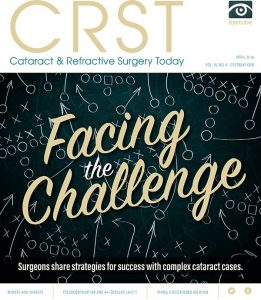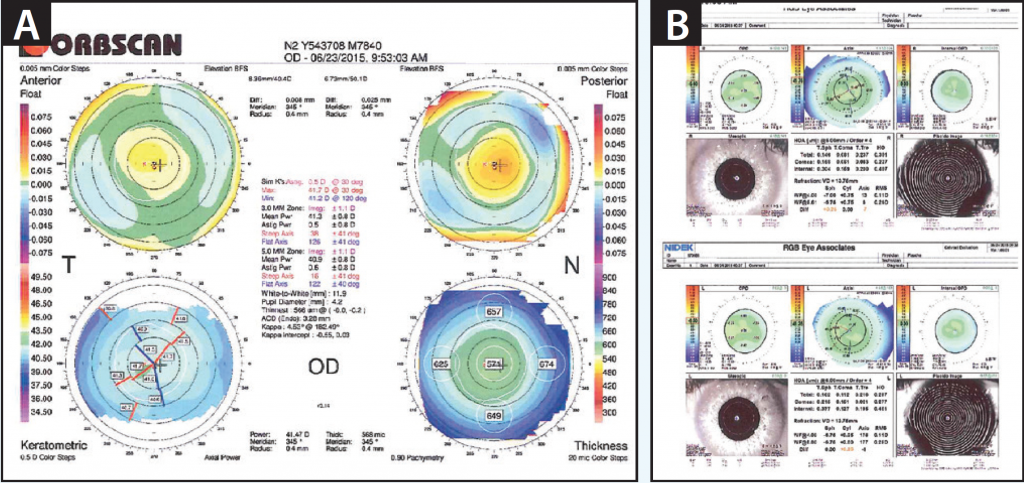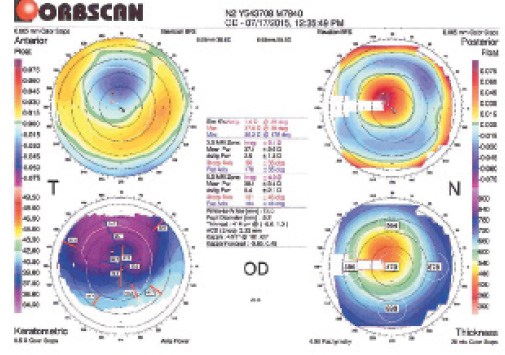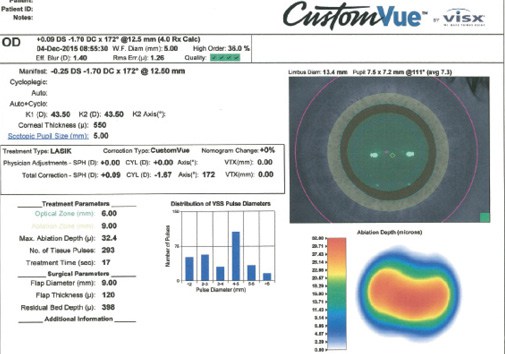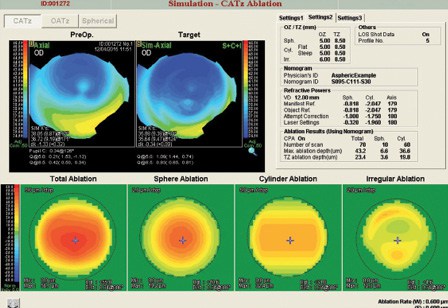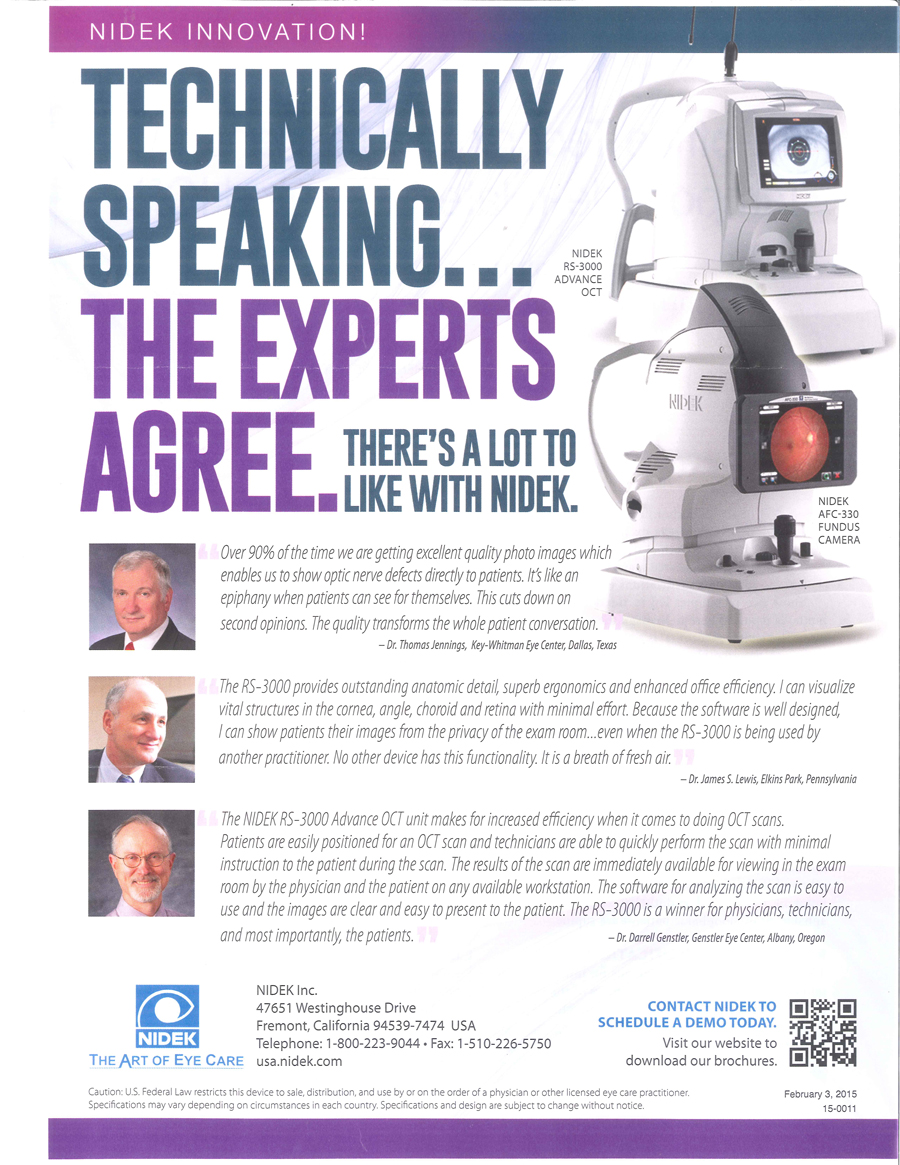updated

The average LASIK surgery costs between $1500 and $2500 an eye. In 2014, nearly two decades after the first procedures were performed, LASIK surgeons are almost always well-established professionals with excellent surgical skills and top of the line equipment. The market has matured since FDA approval and surgical results and patient satisfaction are outstanding. Most patients say LASIK is one of the best decisions of their life.
In almost every market LASIK surgery can be found costing more than $3000 an eye. These so-called premium practices hope the prospective patient subscribes to the old adage “you get what you pay for”. They hope spending more will obviate the need to do their own investigative research. “I am getting surgery at XXXXX Laser Clinic, they are the most expensive, therefore they must be the best….right?”. Yeah….right.
Paying more for LASIK is not correlated with better results, safer surgery, or lower risk. While some of these practices provide outstanding care and top results paying top dollar doesn’t assure you of top results. There are no short cuts to doing your own homework. Patients should welcome the opportunity of evaluate the market and determine their ideal LASIK provider.
LASIK ads can be found offering surgery for as low as $299 an eye. Patients take a day off from work only to learn they don’t qualify for this special price. Disappointed by the higher cost and reminded they have only “one set of eyes” most patients eventually and reluctantly acquiesce to Custom-This or Wavefront-That at 5 times the quoted fee. The Corporate LASIK center notorious for this technique charges an average of $1500 (not $299) an eye. In retail this practice is called bate and switch, in some circles, however, this maneuver is business as usual.
Avoid this kind of manipulation and realize LASIK is not a commodity item.
[su_youtube url=”https://youtu.be/tyFR6gTBvyQ” width=”640″ height=”480″]
Drivers of LASIK Cost
Cost of Equipment
Some doctors perform their surgery at a LASIK Center owned by a hospital, ambulatory surgery center, or even another surgeon. The LASIK Center provides lasers, nurses, technicians and other staff to prepare patients for surgery. These doctors pay as much as half their surgical fee to use these facilities. This is a popular strategy for surgeons who perform a relatively small number of LASIK surgeries, surgeons who are still building their practice, and those not firmly committed to refractive surgery. Surgeons have no upfront costs and can exit the practice of LASIK surgery at any time.
An dubious alternative for doctors is the use of a Roll-On Roll-Off laser. These devices are delivered to the doctor’s office under the cover of darkness the night before surgery. They have reliability issues, experience excessive wear and tear, and are exposed to harsh and non-sterile environments. These lasers require frequent re-calibrations and, in many cases, require an on-site engineer to prevent equipment breakdown and surgical delays. On the other hand Roll-On Roll-Off Lasers are convenient. Doctors pay these trucking companies a premium to appear as if they are a committed LASIK provider. Caveat emptor.
The strongest and most established LASIK surgeons own their facility and maintain their own lasers
The strongest and most established LASIK surgeons own their facility and maintain their own lasers. They employ LASIK technicians, scrub nurses and hold annual service contracts on all of their equipment. This approach adds convenience and flexibility for the patient and the surgeon. If your provider owns the facility, equipment and staff it is your strongest indicator you are dealing with a quality LASIK practice.
Ready to take the next step? Find a lasik surgeon in your area
LASIK Equipment Click Fees
LASIK equipment manufacturers have established a business practice which defies common sense. Each time a surgeon fires the laser, they must pay the laser company approximately $250 per eye. This is not a rental charge, a built-in service contract, nor is it a finance or lease payment. It is simply a shameless pay out for the privilege of using the machine they have already purchased. Undoubtedly there are a handful of Venture Capitalists, CEO’s and Harvard Business Grads laughing at us, somewhere.
Even if your surgeon paid for his/her machine in cash ten years ago, this same surgeon must send a sizable check to the laser company for each and every LASIK surgery performed. If you define a high-volume surgeon as one performing more then 1500 LASIK each year then the relevant laser manufacturer can expect an annual payoff of more than $750K. In contrast, the device costs only $300K and the average service contract is less than $40K.
Nidek is the only company to reject the concept of the click fee. Although their lasers are more expensive than those from Alcon and Visx, surgeons with Nidek lasers are free to use their machine to the fullest. Nidek surgeons can offer enhancements to patients without additional financial burden. Nidek lasers, especially the new TopoGuided Quest have become increasingly popular in recent years.
Internal LASIK Marketing
Surgeons routinely market to their general eye care patients and their families. Some provide financial “rewards” to patients who refer friends, family members or co-workers for LASIK. Many will ask you to like them on Facebook. Large eye care practices find internal marketing a cost effective method of generating new refractive surgery patients.
External LASIK Marketing
Few LASIK practices survive without radio, television, print, and Internet advertisement. Some surgeons report spending over $50,000 a month on external marketing.
Efforts include the usual costs of advertisement on the radio, TV, newspaper and magazines. But they also include free surgery to radio and TV personalities in exchange for on-air promotions, licensing fees paid to the local sports teams to be the “designated LASIK surgeon”, paid advertorials in the local papers, bulk mail campaigns including ValPak, Clipper and others.
Other costs include massive email campaigns, hired bloggers to promote the practice, payments to review sites like Yelp and Angie’s List to prominently list the practice, and SEO experts to elevate the practice for successful searches on Google, Bing, Yahoo and more. Website builders, social media experts, and highly ranked LASIK directories are routinely retained by successful LASIK surgeons. Some of these surgeons even resort to Groupon to gain marketshare and visibility.
Internet marketing is both effective and expensive. Patients in this demographic use the net to learn about LASIK and to evaluate prospective LASIK surgeons. Pay per click (PPC) costs for a single website hit in a major LASIK market can run the surgeon $20 per view.
Marketing is one of the strongest drivers of LASIK costs.
LASIK Co-Management Fees
Many LASIK surgeons share 10 to 20% of the LASIK fee with referring Optometrists who, except in a few states, are not licensed to perform eye surgery. Some non-surgical Ophthalmologists also collect co-management fees. These payments can reach $1000 per patient and help generate a financially robust referral pattern.
Co-management is convenient for the patient and lessens the post-operative load for the surgeon. When problems in the post-operative course arise co-managing surgeons and consulted.
Many patients go to the LASIK Surgeon or LASIK Center recommended by their Optometrist or non-surgical Ophthalmologist
Many patients go to the LASIK Surgeon or LASIK Center recommended by their Optometrist or non-surgical Ophthalmologist. LASIK patients owe it to themselves to do their own research before making such an important committment.
Funding the Cost of LASIK
LASIK is expensive and many patients use financing.
There is considerable variation in the financing rates available. Simply getting the lowest monthly payment is not always the most sound fiscal decision. Borrowing money always has associated costs and every “special rate” or “discount opportunity” carries with it hidden charges. It is wise to scrutinize the fine print.
Flexible Savings Accounts (FSA) also known as Health Savings Accounts, Medical Savings Accounts, and Cafeteria Plans have become very popular for LASIK Surgery funding. The advantage is that LASIK is paid using pre-tax dollars.
When a practice offers zero down and zero interest for 12 months the money lenders are not being magnanimous. They charge both the patient and the LASIK provider for this privilege. Be assured, these costs are built in to the cost you pay for LASIK.
Discounts are often provided for employees of a specific company. Eventually, patients realize there are discounts for being a fire fighter, a veteran, a first responder, a nurse, a boy scout, or a tennis player. There may be discounts for being left handed. These discounts are just part of the marketing effort.
Extra LASIK Charges
Some low cost LASIK providers will charge extra because your vision is so bad (too much astigmatism, too high a presciption). My advice….get out of that office.
Some LASIK providers will charge you extra for post-op visits after a few months. My advice in this scenario is the same as above.
Some doctors will offer lifetime enhancements as long as you see your referring eye doctor every single year for a full evaluation. Unfortunately, this obligates the patient to often unnecessary visits with additional non-covered costs and plenty of waiting room time. It benefits the referral network more than the patient. Remember, if you miss one year, your lifetime enhancements are cancelled.
Most surgeons will include an enhancement without cost in the first year or two. Variations in healing occur and best practices should include at least a year of clinically appropriate enhancements in the original LASIK cost.
Some practices “nickel and dime” their patients with additional charges for dry eye care, punctual plugs, and refractions. Avoid these practices.
The Corporate LASIK Phenomenon
A handful of suits determined years ago that LASIK was a great marketable commodity. Some of these public corporations have come and gone. Others have come, gone and returned after a brush with bankruptcy court. They have teams of lawyers to defend their service marks, advertising campaigns and reputation. Nevertheless, they are capable of producing quality results in select cases. Unfortunately, the patient-physician experience at the typical LASIK Corporation is significantly challenged.
The Shooter
Most Corporate LASIK programs utilize the concept of a shooter. The shooter is an experienced LASIK surgeon who meets the patient’s chart on the day of surgery, checks the laser settings, may or may not wave hello to the patient, and then performs the procedure. The next day the surgeon will be in another town performing more surgery on another group of never-seen-before patients. Suprisingly, the results can be excellent.
While responsibility for the surgical results belongs to the surgeon from a medico-legal standpoint, the patient-physician bond is understandably fragile. Because the surgeon travels from one corporate center to another, follow up care is complicated. Qualified optometrists usually handle the standard issues but the patient faces significant obstacles to care if problems arise.
Shooters often limit their practice to LASIK. Shooters are only involved on the day of surgery and the patients “belong” to the corporation. Typically, shooters are paid about $500 per patient and never see them again.
Corporations will usually promote their expertise by claims like this, “We have performed over 100,000 procedures.” They imply competence by adding the surgical volume of all hired shooters over the last ten years and attributing that number to the corporation. It is as if the suits were actually performing the surgery. Of course, a new shooter at Corporation X still carries the reputation of “over 100,000 procedures” which should provide absolutely no reassurance to the prospective patient. Caveat Emptor.
Ready to take the next step? Find a lasik surgeon in your area
The University LASIK Phenomenon
Medical Schools and Universities have a curious relationship with LASIK. While some helped spawn its development, most initially eschewed refractive surgery and banned its use.
Unlike most other fields of medicine, Universities have no monopoly on eye surgery technology. LASIK equipment and instrumentation in Universities often lag behind the equipment available at more progressive private practices. Also, Universities are typically teaching facilities and few LASIK patients want their surgery to be a learning experience for a fledgling eye doctor.
Tiered LASIK Pricing
Insurance does not pay for LASIK for at least a dozen reasons. While the high price can be initially unsettling, patients eventually understand the value of this life changing intervention. Practices use tiered pricing to help “convert” patients from undecided to committed.
Tiered pricing allows a salesperson to lure the patient into surgery. The remainder of the time is spent up-selling the procedure from “good enough” to ” the best, most modern, most advanced, least risky, most excellent LASIK surgery possible”…..for about $1500 more. Needless to say, almost everyone selects the higher tier.
Another anomaly of LASIK is how a surgeon can ethically utilize a second best or outdated technology on a young patient’s eyes because they choose not to pay a few more dollars. If your surgeon is willing to do that, find another doctor.
I asked a competitor how his conscience handled this scenario and, to my pleasant surprise, he confided in me that he did the highest tier procedure on all patients whether they paid for it or not. Clearly, ethics has survived in small pockets of Corporate LASIK care.
Custom or Wavefront
CustomVue LASIK, Wavefront LASIK and Wavefront Optimized LASIK are marketing terms, owned by excimer laser manufacturers and designed to upstage the competition. All health care should be customized and optimized for the patient.
Wavefront is the application of Hubble telescope optical principals (Zernicke Polynomials circa 1933) to human optical performance. The concept of aberration has been hijacked by Madison Avenue in a sophisticated attempt to prove my laser is better than yours.
LASIK marketing includes references to the RMS (root mean square) value as the cause of all visual abnormalities. Halos at night, glare and starbursts have been attributed to coefficients of orthogonal polynomials. This emperor has absolutely no clothes.
Technology continues to improve and most modern lasers provide outstanding visual function in appropriate candidates when skilled surgeons are involved. Recognize the blather and evaluate actual visual results.
TopoGuided
Unlike the obfuscation of Wavefront and Custom LASIK, Topoguided LASIK is real science and is the product of more than a decade of research and development. This breakthrough, based on established human visual technology, has significant potential.
SuperVision is the ability to see the line beyond 20/20, also known as 20/15. Studies have shown that Topoguided LASIK outperforms Wavefront Optimized, CustomVue and Custom LASIK in the ability to achieve SuperVision. Over 50% of Nidek Quest Topoguided LASIK patients achieved SuperVision in FDA clinical trials.
My experience shows that Topoguided LASIK is helpful in all patients and reduces glare, halos, star-bursts and night driving complaints. It also provides hope for patients with highly abnormal corneas including those with trauma or previous eye surgery.
The Flap
Advanced Surface Ablation
Surface ablation, or PRK, does not involve a corneal flap. The excimer laser is focused on the anterior corneal surface (stroma) after the epithelial cells are removed. Epi-LASIK, a modern variant of the procedure involves the sophisticated removal of the epithelial layer using a device designed by Moria (Anton, France). It avoids the use of toxic topical alcohol and the trauma of the Amoils brush. Many surgeons believe Epi-LASIK provides an enhanced optical surface for refractive correction. These procedures are approved for virtually all government, police and military services because of their low risk.
Unfortunately, all varieties of surface ablation, even Epi-LASIK, involve mild discomfort and slightly prolonged visual recovery.
Flap
Construction of a thin anterior corneal flap led to the popularity and growth of modern refractive surgery. It allowed for excellent results with little or no discomfort, a negligible recovery period, and enhanced stability.
Mechanical microkeratomes were first used to create the LASIK flap. They have improved over the last three decades but have been all but replaced by their FemtoSecond based competition.
The term bladeless LASIK, while somewhat deceptive, describes a laser cut flap in contrast to a microkeratome cut flap. Mechanical microkeratomes have continued to evolve and remain as capable as their FemtoSecond competition. While FemtoSecond lasers won the marketing wars, some skilled surgeon use a modern mechanical microkeratome with outstanding results.
SMILE
The next horizon for LASIK is SMILE (small incision lenticle extraction). Two internal stromal ablations are performed and the intervening corneal tissue is removed to effect a minimally invasive refractive correction. The Zeiss VisuMax FemtoSecond laser, used in my practice for LASIK flap creation, is one or two years away from FDA SMILE approval.
The thought is that SMILE will yield a safer, more precise, and more stable refractive result and entirely replace LASIK.
The Choice
The choice of the ideal LASIK provider is best founded on deliberate research. Investigate your potential surgeon’s reputation, practice philosophy, clinical expertise and experience. Check out the facility and schedule an evaluation. If your visit includes an up-selling salesperson, a traveling shooter, extra charges for astigmatism, or a price that is way too low or way too high, schedule an evaluation elsewhere.
Choose the right surgeon and let LASIK enhance your life.
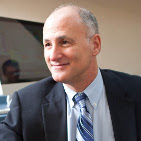 by
by 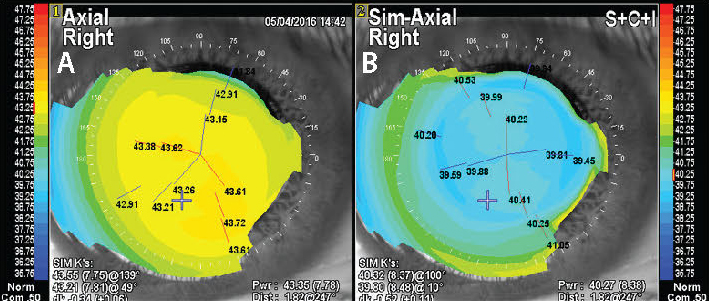
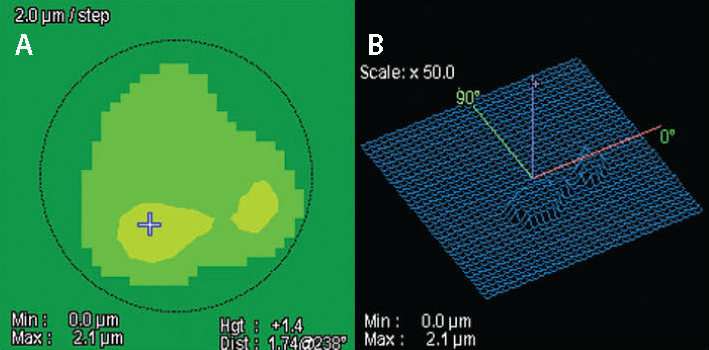
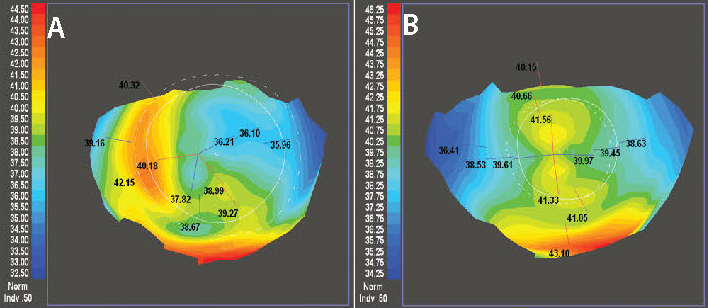
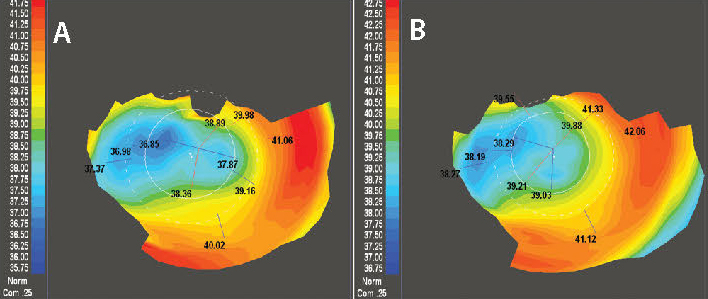
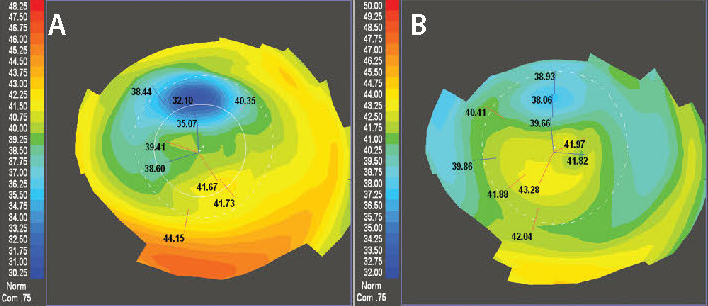
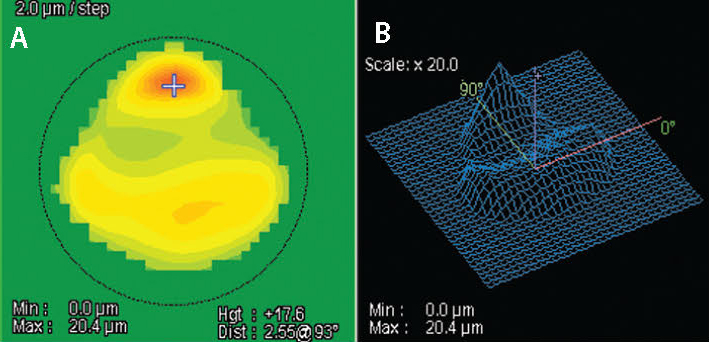
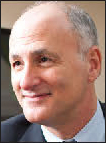 James Lewis, MD, is a tertiary care anterior segment specialist who has practiced in Elkins Park, Pa., for 27 years. He purchased his first NIDEK in 1999 and has always had an interest in treating highly aberrated corneas with the excimer laser. Dr. Lewis reports no relevant financial disclosures.
James Lewis, MD, is a tertiary care anterior segment specialist who has practiced in Elkins Park, Pa., for 27 years. He purchased his first NIDEK in 1999 and has always had an interest in treating highly aberrated corneas with the excimer laser. Dr. Lewis reports no relevant financial disclosures.